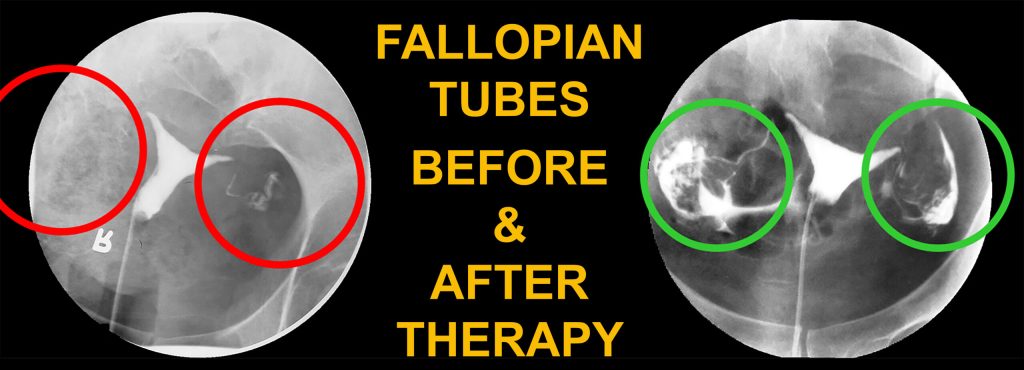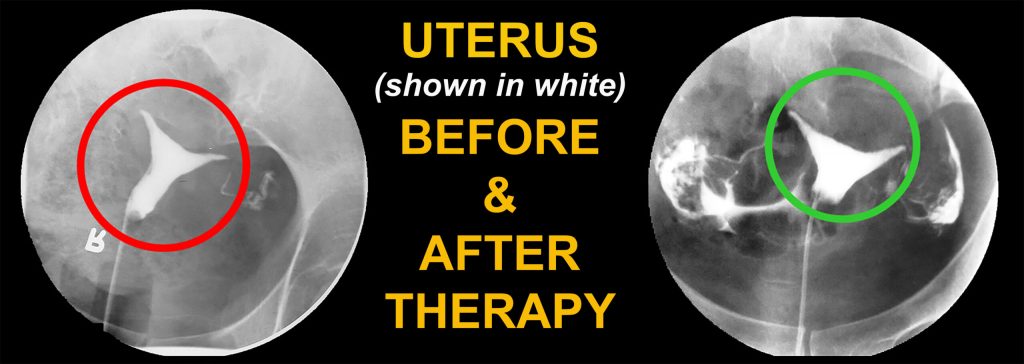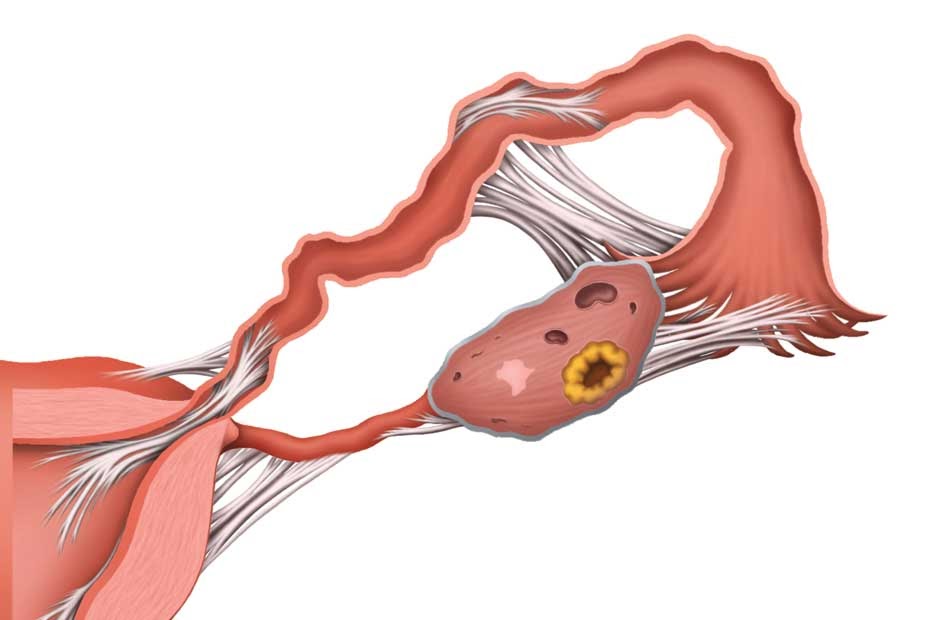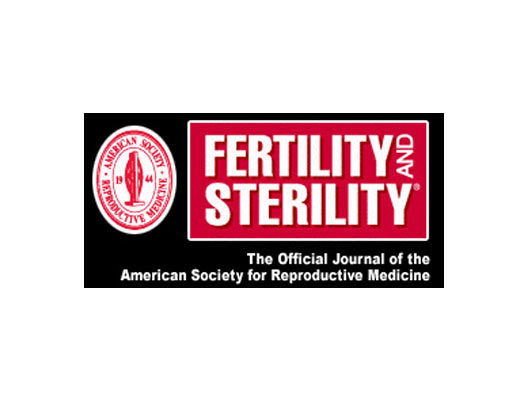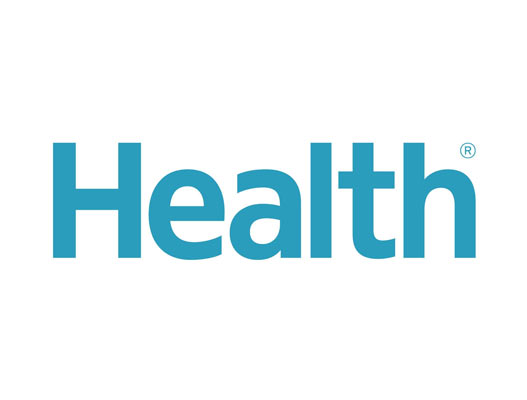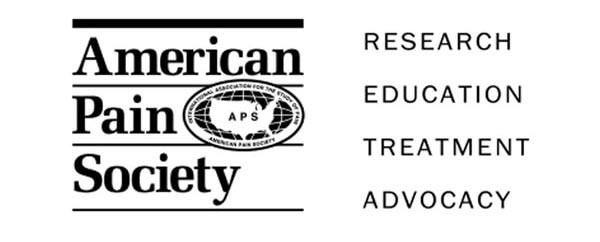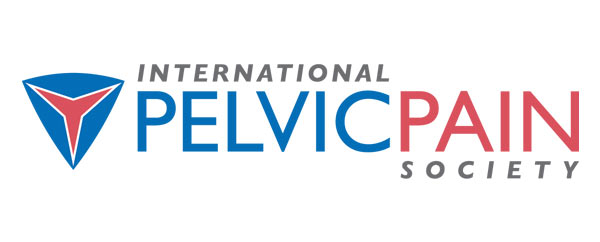Comparing Treatment Options
| PROCEDURE | PREGNANCY RATE | COSTS |
| Clear Passage® Bodywork | 39.33% ii | $6,500 |
| In Vitro fertilization (IVF) | 30.87% iii | $15,000 – $30,000 iv |
| IVF after Clear Passage | 56.16% ii, iii | $21,500 – $36,500 iv |
Hearing you have blocked tubes can leave you with questions you never thought to ask your doctor. This web page can answer many of those and let you know that there is hope for a nonsurgical resolution to your problem.
In the past, doctors thought patients with blocked tubes could never conceive a child naturally. For years, their advice was to remove blocked tubes and undergo IVF, find a surrogate to have the pregnancy in your place or simply adopt a child. That is no longer the case.
Recent advances in healthcare have examined a bodywork shown to clear blocked fallopian tubes and yield natural pregnancies at rates similar or better than IVF. Hundreds of women have conceived babies naturally, sometimes with successive children without turning to strong pharmaceuticals, surgery or other expensive options.
What is Clear Passage®?
Clear Passage® (CP) is an all-natural hands-on bodywork developed in 1986, just eight years after the world’s ‘first test-tube baby’ was born. Initially developed by a physical therapist and her husband to decrease her own pelvic adhesions (the main cause of tubal blockage) they were surprised when patients with blocked fallopian tubes became pregnant naturally, some with successive babies from the therapy alone. When a respected gynecologist Chief of Staff became fascinated with the all-natural approach, the team began publishing results of their findings. To date, several studies on the Clear Passage® approach have been published in peer-reviewed medical journals.
Peer-reviewed studies show Clear Passage®️ has decreased or eliminated adhesions throughout the pelvis and abdomen. Our focus is to detach the tiny but powerful collagen fibers that comprise adhesions from each other by dissolving the bond that attaches them. In doing so, the adhesions tend to unravel and dissipate, much like pulling out the run in a three-dimensional sweater.
The therapy has brought natural pregnancies after clearing adhesions anywhere in the tube, and with swollen tubes (hydrosalpinx). When a swollen tube clears during therapy, the liquid trapped within the tube flows out and the tube appears to return to its normal structure and function – including one or more subsequent pregnancies for many women.
What Occurs in Therapy?
To view what occurs during therapy we asked radiologists to conduct “before and after” tests such as the ones shown below. Using this objective data, we can clearly see whether tubes have opened and if the uterus is squeezed in a straitjacket of adhesions (as shown on the left of these images), or ‘relaxed, open and receptive for implantation’ such as the one shown in the ‘AFTER’ images on the right.
The white parts of these x-rays show a woman’s reproductive tract before and after therapy. Diagnosed totally infertile due to tubal blockage, this patient chose our ‘hands-on’ therapy to decrease undetected adhesions in her uterus and fallopian tubes. After therapy she was diagnosed fertile, fully able to conceive.
CLEARING FALLOPIAN TUBES
In the LEFT IMAGE (Before Therapy), dye enters the white area showing the inner walls of the uterus but cannot exit (shown in red circles); these tubes are blocked.
In the RIGHT IMAGE (After Therapy) dye fills the uterus, then pours out of both fallopian tubes (shown in green circles); these tubes are wide open.
DECREASING ADHESIONS & SPASM OF THE UTERUS
In the LEFT IMAGE (Before Therapy) dye enters the white area showing the inner walls a uterus that is quite narrowed, squeezed by adhesions (in red circle). This woman will have more difficulty conceiving or carrying a baby to full term (risk of miscarriage).
In the RIGHT IMAGE (After Therapy), dye fills a uterus that has been freed from constricting adhesions (in green circle). The increased mobility creates a much more relaxed organ, one that is much more capable of accepting an implanted embryo and carrying it to full term.
Over 1,000 Babies Born
Clear Passage®️ is a world leader with over three decades of experience opening and returning full function to blocked fallopian tubes (including swollen tubes) without surgery. The therapy, which can feel like a deep massage, has been shown to decrease the adhesions that are the primary cause of blocked tubes. These internal scars can form after a surgery, injury, infection, or endometriosis. They can act like a glue in the female reproductive tract, blocking fallopian tubes, binding or squeezing structures like internal straitjackets.
Over 1,000 babies have been born to women diagnosed infertile after treatment at Clear Passage®️ clinics. In published studies, the therapy has been shown to open totally blocked fallopian tubes in most women, followed by one or more natural pregnancies for many of them. We cannot open tubes that were intentionally closed by a surgeon. Women with tubes that were surgically closed and never reopened may benefit from our pre-IVF therapy.
Click here to view our published infertility success rates and video testimonials. Complete the online Request Consultation form to share your medical history so we can intelligently converse with you about your specific case (no charge).
Treatment Options Explained
This section examines scientifically verified choices available to you with procedures, success rates and costs. It can help you make the best choices for yourself, your partner and your future family. Statistical data is included where available. Footnotes quote reliable sources such as the CDC and PubMed (NIH) indexed studies; costs are from cited sources where available. The least invasive techniques are often the least expensive.
Procedure: Clear Passage® Bodywork
Pregnancy rates: 39.02%
Cost: $6,500
Indication: Blockage anywhere in either or both tubes
Notes: We open blocked fallopian tubes in 68.9% of women with no prior tubal surgery. Since 56.64% became pregnant, the calculated pregnancy rate for most women (those with no prior tubal surgery) is 39.02%. If your tubes were ever cut by a scalpel or laser, your rate would be about half of that.
Ongoing: After therapy opens one or both tubes, there is no need for additional therapy. Several women have reported two or more successive pregnancies up to six years after a single 20-hour session opened their tube(s). We only recommend additional therapy if there is obvious improvement (dye goes further through tube) but tube did not clear.
Procedure: 20 hours of hands-on bodywork (no drugs, no surgery) shown to decrease adhesions anywhere in the abdomen or pelvis. Therapy feels like site-specific massage, often provided for 4 hours a day for five days (2 hours each morning and afternoon Monday – Friday).
Procedure: In Vitro Fertilization (IVF) alone
Pregnancy Rates (USA): 30.87%
Cost: $15,000 to $30,000
Indication: Blockage anywhere in either or both tubes
Notes: Data from the CDC shows 30.87% is the U.S. national pregnancy rate after eliminating fertility preservation from the equation. Fertility preservation refers to freezing embryos, eggs, ovarian tissue, sperm, or testicular tissue for future reproduction. v
Ongoing: IVF aims to create one pregnancy. If no pregnancy ensues or the couple wants a second child, part or the entire process must be repeated. If eggs or embryos have been frozen, repeat extraction and laboratory fertilization may not be required. Noting the frequent need for repeat IVF, medical studies have begun to report pregnancy rates for multiple IVF cycles. A recent study in Fertility and Sterility noted pregnancy rates decrease significantly after four IVF failed attempts vi. A study from JAMA gives pregnancy rates for up to and beyond six IVF cycles. vii
Procedure: Many reproductive physicians start by removing one or both fallopian tubes. Thus, IVF becomes the woman’s only way to have her own pregnancy and childbirth. Reproductive Endocrinologists want to guide part or all of a woman’s reproductive cycle. Many will first administer hormones to stop your normal menstrual cycle. Most will inject (or ask you to inject) ovarian stimulating medications to increase egg production. They will then harvest (surgically extract) several of the best eggs. Using a microscope, they examine the resulting follicles to determine the best candidates for fertilization. Your doctor fertilizes one or more eggs by introducing sperm, then re-inserts the best fertilized eggs into your reproductive tract, hoping they will result in full-term pregnancies. Your doctor may suggest you freeze some eggs or embryos to use if the IVF is unsuccessful or later in life – or may ask if you would like them destroyed.
Procedure: IVF after Clear Passage®
Pregnancy Rate overall: 56.16% Pregnancies by age group are shown in the graph below.
Cost: $21,500 to $36,500 (CP at $6,500, then IVF at $15,000 to $30,000)
Indication: Blockage anywhere in either or both tubes
Notes: The pregnancy rate of IVF after Clear Passage (56.16%) is nearly double (1.8 times) the rate of IVF alone.
Timing: CP therapy should be completed at least two weeks before the start of ovarian stimulating medications. IVF embryo transfer must be performed within 15 months of CP therapy. With this 15-month gap, some women choose to start with CP therapy, knowing that it will improve their chance with a subsequent IVF if CP therapy (alone) does not result in the child they desire.
Procedure: This requires two successive procedures, CP’s hands-on therapy followed by IVF. Review the Procedure descriptions for Clear Passage® and for IVF above.
What Are Blocked Tubes?
To ensure proper function of your reproductive structures, your doctor has almost certainly ordered an x-ray dye test (hysterosalpingogram, or HSG) or ultrasound to investigate whether your fallopian tubes are patent, meaning that your tubes are open. If one or both tubes are partially or completely blocked, egg and sperm cannot meet easily or at all, complicating or preventing a natural pregnancy.
Conditions such as pelvic inflammatory disease (PID) from sexually transmitted infections, surgery or injury to your vagina, coccyx (tailbone), low back, or pelvis and endometriosis can all cause the internal scarring that may block fallopian tubes.
Your body’s first response to tissue damage is to lay down a random pattern of small but powerful strands of collagen. These fibers create an internal scar called an adhesion, which helps isolate the injured tissue so your body’s immune system can continue the healing process. Our bodies do not have a way to dissipate adhesions once this process is complete. Even small adhesions can close the tiny passages designed to carry single-celled sperm and eggs. When adhesions form on and within the opening of a fallopian tube, they can act like glue or a stopper, partially or completely closing the passageway.
Total vs. Partially Blocked Tubes
In a totally blocked tube, sperm and egg will never meet to create a natural pregnancy. Natural pregnancy cannot occur unless the tube is first opened by surgery or a manual physical therapy (discussed further down this page).
Partial blockage can be dangerous because your fertilized egg can become trapped and implant on the inner wall of the tube rather than the wall of the uterus. Referred to as an ectopic pregnancy, this can be life-threatening and never creates a viable pregnancy. Generally diagnosed by pelvic pain and pregnancy test, an astute ER physician can inject methotrexate, a drug that kills the embryo but may save your tube. If you ever develop pelvic pain bad enough to send you to the ER, be sure to inform the doctor if there is a chance you may be pregnant. If not caught early, your tube may be damaged beyond repair and could potentially have to be removed, often via emergency surgery.
Swollen Tubes (Hydrosalpinx)
The doctor may find a tube is swollen, filled with a liquid that creates a ‘lake’ inside your tube like a river that swells beside a dam. Reproductive physicians are concerned that even with an assisted pregnancy such as IVF, the liquid might seep down and interfere, possibly resulting in miscarriage. Thus, they generally recommend surgically removing a swollen tube to avoid potential complications.
Symptoms of Blocked Fallopian Tubes
Blocked fallopian tubes can be difficult to diagnose because many women don’t show any symptoms until trying to become pregnant. Although blocked tubes don’t often cause symptoms, here are some that you may notice.
- Persistent pain on one side of the abdomen
- Inability to become pregnant after 12 months of intercourse without contraception
Causes of Blocked Fallopian Tubes
Fallopian tubes are the delicate environment where life begins. Each of these two miraculous structures provides a safe place for your one-celled egg to meet your partner’s sperm, and to create a life that will continue its journey to implantation in the uterus. As such, this tiny organ must be able to function freely and without restriction for a pregnancy to occur.
Tubal disease, generally defined as blocked fallopian tube or tubal occlusion accounts for 20% to 30% of all female infertility. The primary cause of tubal blockage is internal scarring (adhesions.) These glue-like bonds form in the reproductive tract as the body’s initial response to pelvic inflammatory disease (PID), endometriosis, sexually transmitted infection, a prior surgery or ectopic pregnancy.
After adhesions first form, they can remain in the body for a lifetime. When they form at the distal end of the tube (near the ovary), they can cause swelling of the tube in a condition called hydrosalpinx. Adhesions can form or spread into any part of the tube, and anywhere in the pelvis. Wherever they form, they can squeeze reproductive structures or attach them to other structures, further decreasing fertility.
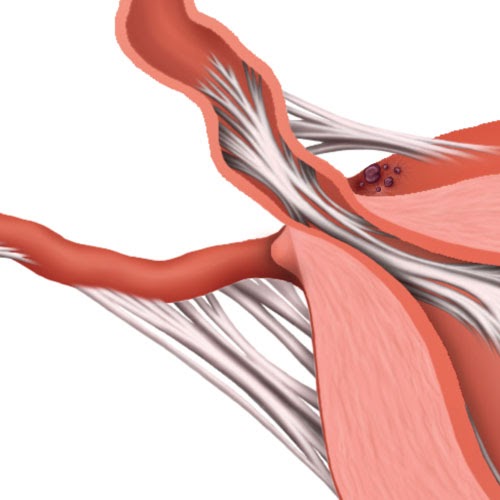
Did I do this to myself? is a question we sometimes hear. It is impossible to know exactly what blocked your tubes. With all its bumps and bruises, life’s healing events occur at different places in the body causing adhesions that can spread to various locations within the body.
Your reproductive structures are designed to create and support the growth of life. Its warm, moist environment is perfect to harbor bacteria that can grow into a significant, or even mild infection. Items entering the vagina over life (a partner, a tampon, a device, etc.) are not always sterile. There is a high likelihood that an infection will develop at some point over the span of any woman’s lifetime. Even undetected infections can spread up into the uterus and tubes from the time you are born.
Do not lose hope; you still have choices. We suggest you accept you and love the body you have, then learn all you can to create the life and family you want. Using your brain, heart and intuition, give yourself permission to move forward to create the life and family you envision for yourself now, and for the future.
Related Content:
- Blocked Fallopian Tubes
- Blocked Fallopian Tubes After Chlamydia
- Effective Nonsurgical Treatment for Blocked Fallopian Tubes?
- Patient Story: Two Natural Pregnancies After Blocked Fallopian Tubes
- Blocked Fallopian Tubes Naturally
- Study Shows New Therapy Opens Blocked Fallopian Tubes, Returns Fertility Without Surgery
- 7 Myths About Blocked Fallopian Tubes
- Physical Therapists Open Blocked Fallopian Tubes Without Surgery
- You Have Blocked Fallopian Tubes, Do You Need Surgery to Remove Them?
- Patient Story – Blocked Fallopian Tubes
- Opening Blocked Fallopian Tubes
- Opening Blocked Fallopian Tubes – Surgical vs. Natural
- Study Shows Alternative Therapy for Infertility Opens Blocked Fallopian Tubes Without Surgery
- The Three Types of Fallopian Tube Blockages
- VIDEO: Opening Blocked Fallopian Tubes – Naturally


